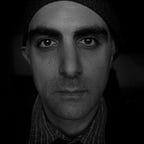The ghosts of Spree Park, Berlin
Thin wisps of smoke rise from the chimney of a green sailing ship. Families meet with friends on the quay to spend a sunny Sunday together. A bridge secures the Insel Der Jugend to the mainland, as if to keep it from the rush of the stream. Someone water flowers or hang out laundry on the houseboats. Berlin looks like a maritime city on the banks of the Spree between Treptower Park and the vast Plänterwald’s urban forest. But if you walk along the path through the dense beech forest, what you see among the dry shrubs and bare branches tells a different story: here are the remains of Spree Park, the largest amusement park in East Germany.
The Disneyland of Communism.
When it opened in 1969, it was named VEB Kulturpark Plänterwald, Plänterwald Cultural Park. Twenty years later, while a massive military parade in the center of Berlin celebrated the 40th anniversary of the GDR, the Kulturpark reopened after some renovations and a new, giant Ferris wheel was inaugurated. Too bad about the timing. About a month later, the wall fell and the park closed again.
Today, walking along the fence surrounding the abandoned Spree Park, it seems to hear creepy music and terrifying laughter, like in one of those horror movies in which killer clowns roam around out of service rides, moved by a mysterious energy. And being in front of a monumental metal structure, wrapped in a yellow and orange tarp, only increases this feeling. It’s the circus tent. One of the attractions brought here by Norbert Witte, a carny infamous in Germany.
Life is a rollercoaster
On the night of August 14, 1981, Hamburg’s amusement park was packed. Many were there to try the Katapult Roller Coaster, one of the fastest roller coasters in the world, but it was closed for maintenance. So they had fallen back on Skylab, a fast-rotating ride. It wasn’t as exciting as the Katapult, but when it picked up speed, especially the little ones screamed with excitement. Then, a sudden loud metallic noise turned those screams into cries of terror. Something weighty had hit the ride. Fifteen people were injured, and seven others lost their lives. What killed them was a crane arm that was repairing the Katapult. It was operated by him, Norbert Witte, the man who a few years later would design Spree Park’s downward parabola.
Witte belonged to a family of jousters and circus performers. In 1913, his grandfather Otto, acrobat and magician, had managed to be crowned king of Albania for a few days before being discovered. In 1991, Norbert bought KulturPark Plänterwald and added new attractions. He built the Grand Canyon Water Ride canals, a rotating cup carousel, a pirate ship, a roller coaster, a western village, a circus tent, and a lake. The following year, he opened the new amusement park and officially named it Spree Park.
From Lima to Berlin, flying carpets and cocaine
For many Berliners, a modern amusement park symbolised a renewing city. For others, a nostalgic reminder of their past. The park was the shooting location of Spuk unterm Riesenrad, literally “ghosts under the Ferris wheel,” a series produced in 1978 by the GRD’s national TV, in which three kids accidentally brought back to life the characters of the Demonexpress, VEB Kulturpark’s ghost train. But the fall of the wall changed everything. After an initial period of success, visits to Spree Park dropped dramatically and Witte was forced to close with a debt of over 11 million euros.
The carny accused the municipality of being the cause of his failure. Plänterwald’s forest had been declared a natural park and he had not been able to build a parking lot, which he said was essential to attract new visitors. To make matters worse, the area he had been granted was bound to remain an amusement park until 2061. “They have deprived me of the foundation of my business,” declared Witte, who, however, already had other plans.
In 2002, in a feat worthy of Herzog’s Fitzcarraldo, Witte disassembled six rides and transported them by ship to Lima, Peru. The following year, under the guise of repairing it, he attempted to ship the Flying Carpet back to Germany. However, as soon as the containers arrived at the port, they were searched by customs agents. A tip-off had informed them that there were nearly two hundred kilos of cocaine inside the pylons of the ride. Norbert Witte was in Germany for a medical examination and it was tried in his country. On the other hand, his son Marcel was sentenced to serve 20 years in Peruvian prisons.
A new Spree Park
Today, climbing over the fence surrounding what remains of Spree Park is an irresistible lure for anyone who loves to explore and photograph uninhabited, ruined places. In 2013, to celebrate his grandmother’s 90th birthday, a young man photographed her on one of the cabins of the giant Ferris wheel they frequented together when he was a child. But a sudden gust of wind set the ride in motion, leaving the lady suspended in midair for hours.
The screeching of the wind-driven gears is a sound well known to anyone walking through Plänterwald’s urban forest today. In addition to this, however, there are louder, mechanical noises that suggest a new reality. Next to the large plastic dinosaurs, once part of who knows what attraction, the rotating cups, and the Wild West station embraced by nature taking back its space, there is a construction site. Bulldozers, trucks and fences are signs of a place in transformation. A new Ferris wheel will open in 2024, and in 2026 the amusement park will come back to life. All that will remain of the old Spree Park is a ghost and a memory in old photos.
